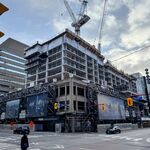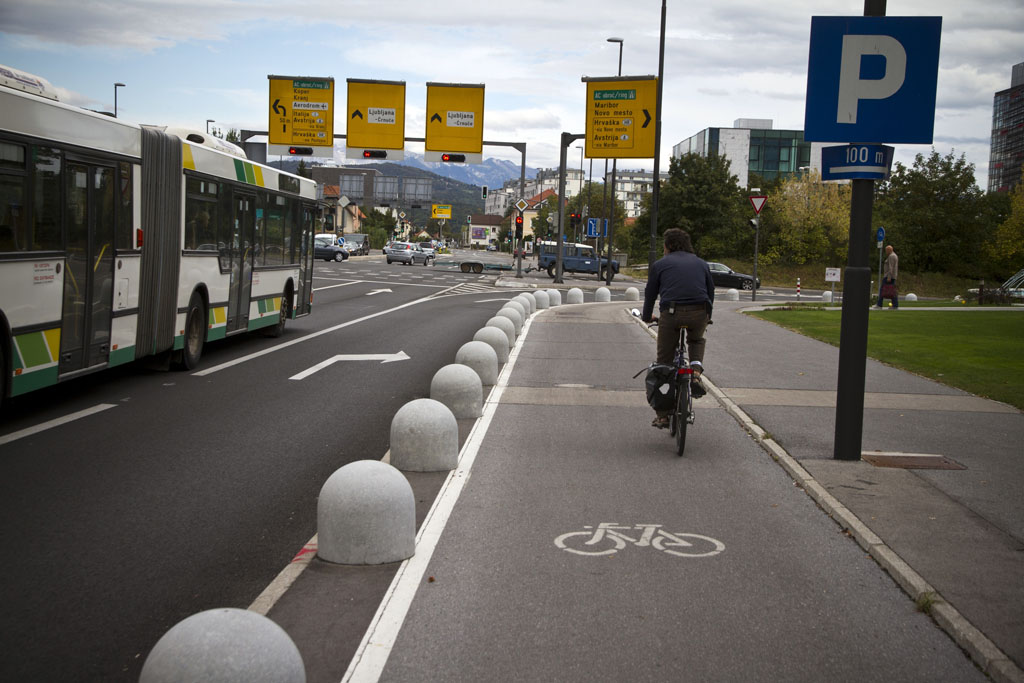Volunteer bike counters step up to gather the data the city should be collecting: Keenan
By
EDWARD KEENANColumnist
Tues., Oct. 3, 2017
You might have seen them out on the sidewalk Tuesday morning, on the edges of downtown along Spadina, Jarvis, Queens Quay and Bloor, with clipboards and video cameras, counting. A platoon of volunteers, doing the work they think the city should be doing.
They were counting bikes, and will continue to do so Wednesday and Thursday. It’s a “cordon count” at 34 locations around the downtown core, attempting to estimate the total number of bikes entering the area during the morning rush.
“I’m someone who believes very strongly in evidence-based decision-making,” says Gil Meslin as he makes hash marks on a clipboard tracking the number of cyclists coming eastbound through the intersection at Adelaide and Spadina. “I’ve seen the city and the mayor deciding increasingly to go the other way on many major decisions,” he says, picking out one piece of data to fixate on, or one anecdote or emotional thread in a debate. “In my mind, any data point that’s current and relevant can only be a positive contribution to the process.”
Meslin is the organizer of the entirely volunteer, “citizen-led” cordon count. He says the idea came to him because the city doesn’t really have any publicly available, up-to-date information about the number of cyclists entering the downtown core.
One cordon count was
conducted in 2010, its results still available on the city’s website. At the time, the plan was to replicate the count every year. But it appears that plan was abandoned. It seems the city may have done such a count in 2014, but if it did the results have not been released publicly. So Meslin, a city planner working in the private sector who is also interested in municipal affairs and transportation advocacy, saw a gap in the information available in our debates.
“Unlike intersection counts or lane counts, where you see how traffic has changed at a particular point, a cordon count shows you system-wide change: how traffic has changed over time across the whole downtown, how behaviour is changing across the city.”
It could be useful for tracking the demand for cycling infrastructure, for instance. And for seeing how the introduction of bike paths (on Adelaide and Queen’s Quay, for instance) has changed cycling system-wide: has the number of people cycling into the core gone up, or have people just changed their route to take advantage of the new infrastructure? How much more likely are people to use one route over another? Where are the heaviest-trafficked routes that do not have bike lanes? A cordon count showing total volume at most major locations from 2017 that could be compared to the earlier data might answer some of those questions.
So Meslin used his Twitter account to put out a call for volunteers, proposing to replicate the methodology of the 2010 study. He got more than 70 responses, and on Tuesday morning said there were about 50 volunteers in the field. They don’t have the human resources to replicate the entire 2010 study, which tracked counts at the 34 locations over a 12-hour period, so they are focusing on the morning peak, 7 a.m to 10 a.m.
“We want to be able to make an apples-to-apples comparison, using the same locations, the same time of day, the same criteria. If there are changes, that tells you something,” Meslin says, noting he won’t try to anticipate what, if any, changes the data may show. He has some volunteers who are professional data analysts and transit engineers to help evaluate the data once it’s collected.
But for now, he’s busy enough collecting the data. The cyclists come in waves through the intersection as the lights change, and Meslin quickly scratches a tally — segmented into 15-minute increments — as they pass. In the peak hour as the sun rises higher and the commuter crush gets heavier, it becomes hard to keep up. Between 7:00 and 7:15, his tally sheet only shows 35 cyclists passing. Between 8:45 and 9:00, the boxes on the sheet overflow with 325 marks. Meslin has a video camera mounted on a tripod to back up his notes.
He says he expects this first attempt will be a starting point — that they’ll be able to improve and refine the process to get better, more reliable data for future counts. “Not every area lends itself to the democratization of information gathering,” he says, in which volunteer amateurs provide the city with statistics. There are some kinds of surveys in which methodological or observational expertise is warranted. But when it’s as simple as counting on the street corner, perhaps there’s an opportunity for the city to work with interested citizens to fill its own informational gaps.
To me, it’s a puzzle why the city wouldn’t be gathering what seems like such basic information on its own — how can we have an intelligent debate about cycling infrastructure in the downtown core without knowing how many people cycle into the downtown core, and where, and when? I think the city should be gathering such information, and making it available.
But if the city won’t, it’s a relief to find out that somebody will.






